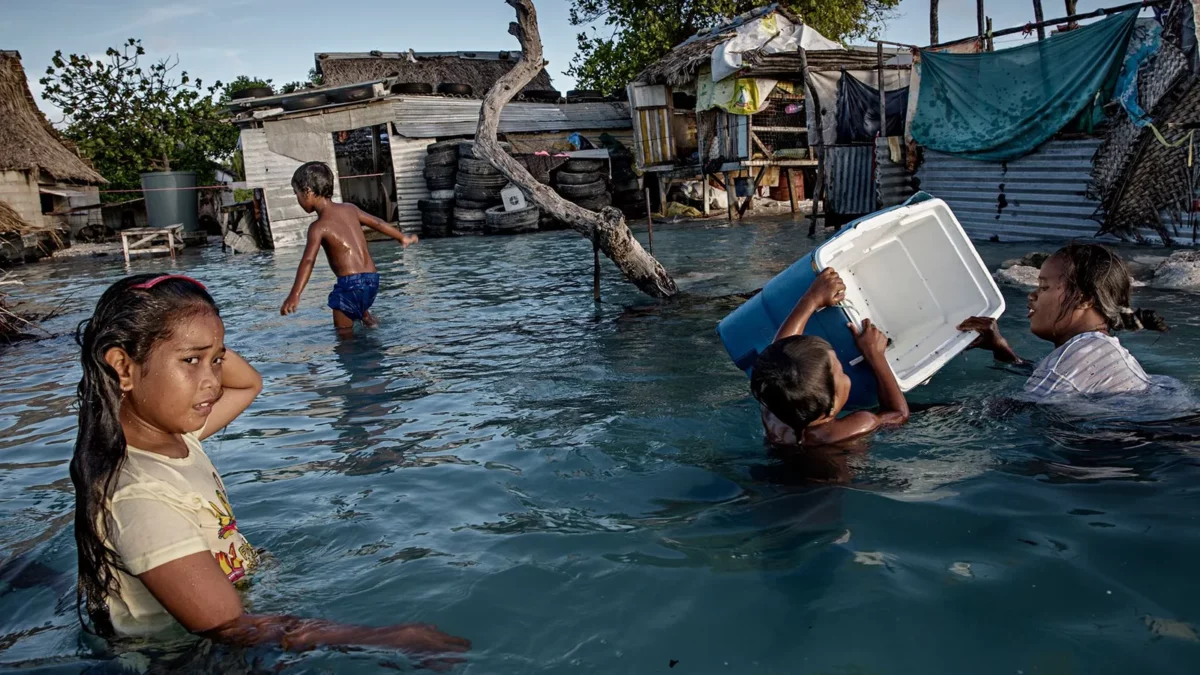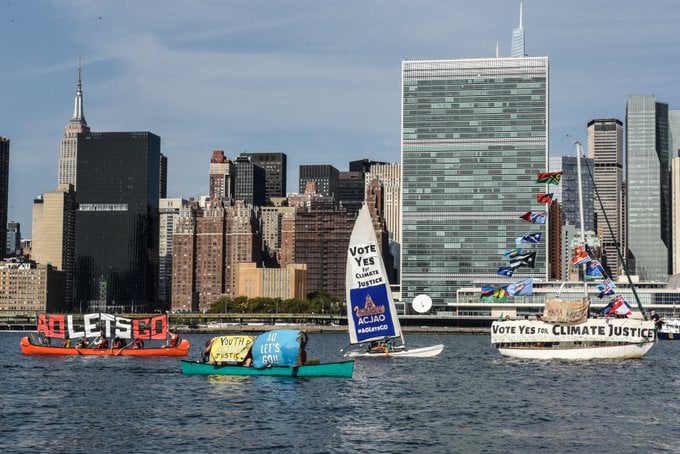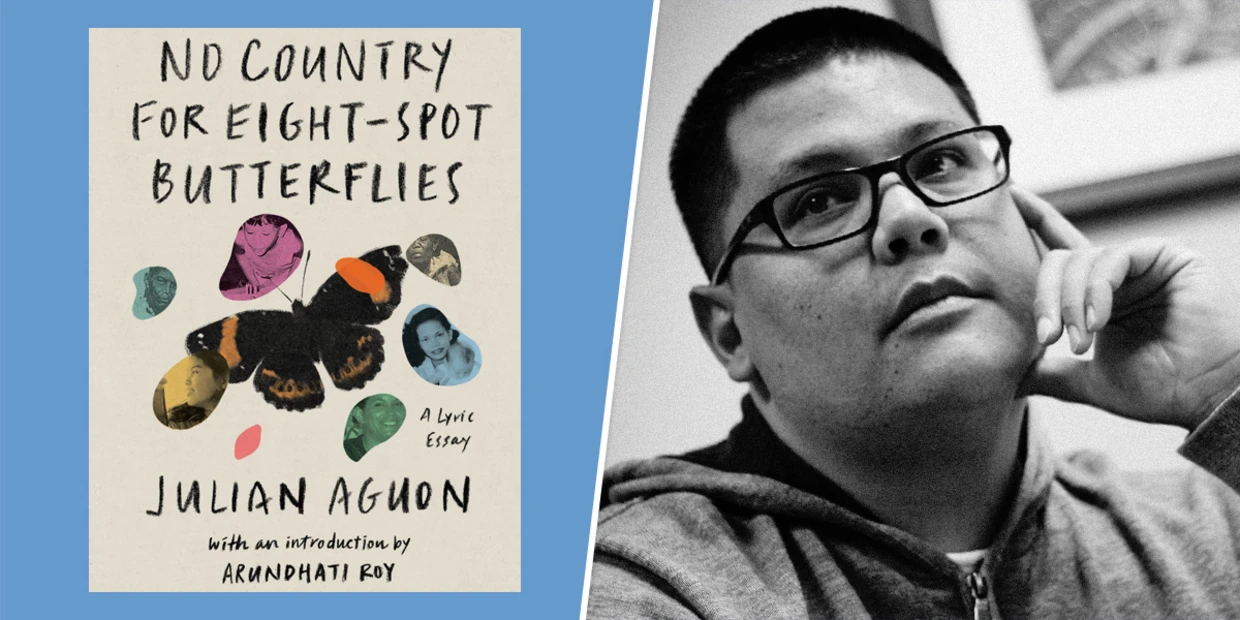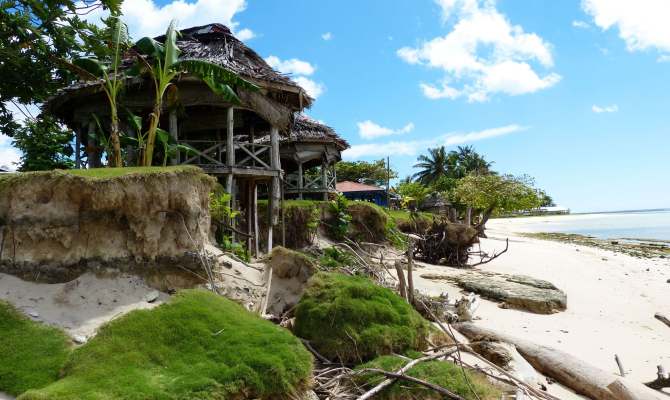Pacific Islands with a deep connection to their geography and those directly experiencing loss and damage impacts can best determine how funds would be spent to address the harm, says Salote Soqo
“Climate-induced loss and damage” may not be the language they use to describe their experiences, but when communities face it, they know what they’re talking about – and how it feels.
“Loss and damage is a term that is new for many of the grassroots communities that our partners serve,” explained Salote Soqo, who is the director of advocacy and global displacement at UUSC. “For the communities most impacted, loss and damage is felt from a very personal place.”
Loss and damage is often described as either economic or non-economic, though the line between the two can be blurry. Economic loss and damage includes the loss of tangible, quantifiable items. This can be the loss of property, and in many cases, livelihoods. Yet, for communities with a deep connection to their geography like those in the Pacific Islands, they also experience non-economic loss and damage, such as the erasure of cultural identity, disconnection from ancestral land, or the weight of trauma experienced from climate-related events.
“The trauma of loss and damage passes from generation to generation,” Soqo said, as she recounts the story of a village that was devastated by a deadly landslide. “Kids who were three years old during the landslide are now in their early teens. Every time they tell their stories, they still weep.”
In part, it is the intangibility of this loss that makes participatory processes for loss and damage funding so critical. Only those who are directly experiencing these impacts can determine how these funds would be best spent to address the harm.
Soqo, a Pacific Islander herself, explains “Land is part of our identity as Indigenous Pacific Islanders. We bury our ancestors close to the shoreline, so when the sea level rises, we lose more than the land. We lose our heritage.”
Earlier this year, Climate Justice Resilience Fund (CJRF) awarded UUSC a US$225,000 grant to explore how to address loss and damage in the Pacific. UUSC will support the activities of at least five of their core partners—including Indigenous-led groups in the Pacific Islands—through a regranting initiative.
In early June, UUSC and its partners met in Fiji to determine and co-design the type of activities that the CJRF grant would support. The convening allowed advocacy-focused organisations, grassroots leaders whose communities are experiencing loss and damage, and UUSC partners to discuss possible responses. The answers ranged from creating more spaces for dialogue about the impact of climate change on the community, to building tangible, small-scale projects, like the construction of a seawall to prevent the destruction of villages.
The grant will also help UUSC encourage other funders to look beyond standard monitoring, evaluation, and learning (MEL) approaches. Both CJRF and UUSC recognise that building monitoring frameworks for loss and damage, particularly for non-economic loss and damage, is critically important for generating more funding. Yet, developing a new approach is also fraught with challenges.
“Economic loss and damage, while not simple, is more straightforward. You can measure it, you can quantify it, you can monetise it,” Soqo points out. “As we support more non-economic loss and damage projects on the ground, there will be pressure to start quantifying the impacts of these investments. And we’re not going to do that.”
UUSC’s reparative approach to funding loss and damage considers the histories of Indigenous communities, including colonisation, oppression, and Indigenous resources being taken, monetised, and capitalised. UUSC will not demand their partners monetise Indigenous resources and experiences as part of the effort to repair the damage.
“When we asked our partners what monitoring and evaluation could look like, they responded, ‘stories.’ Stories are a natural way our partners and communities going through loss and damage can share their experiences, and what these experiences mean to them. These stories might include some numbers, but we’re not going to force it on them.”
Soqo says focusing on stories is especially important considering this CJRF grant is supported by the Scottish Government. Traditional public funding comes from taxpayers and, as a result, is often perceived to have a higher threshold of accountability. This can push public funders to require more easily measurable, quantitative evaluation approaches. Yet, the Scottish Government recognises the importance of understanding loss and damage in the context of the communities facing the challenges and is open to nontraditional evaluation approaches. Soqo hopes UUSC’s results will help other public and private funders understand why a story-based, qualitative approach to evaluation is a more just way to assess funding impact.
“We’re hoping to show how government funding, and potentially multilateral funds, can have an impact on the lives of people when they’re directed to the grassroots groups that are doing this work and living through these experiences,” Soqo explains. “We need to be a model for this opportunity. We need to be able to help funders understand why this more just approach makes sense.”
This story was written by Climate Justice Resilience Fund, originally published at Climate Home News on 13 September 2022, reposted via PACNEWS.




